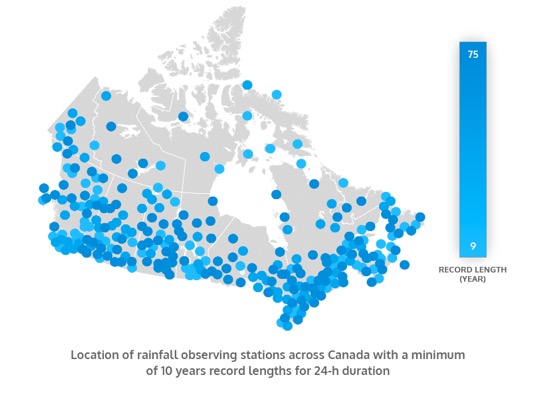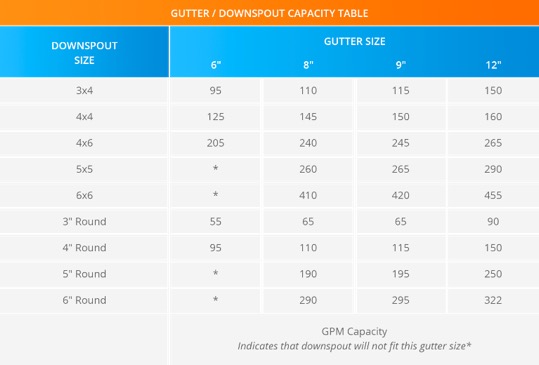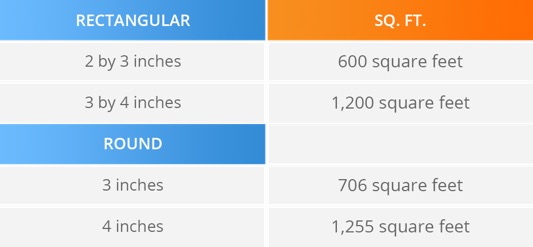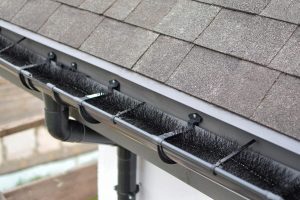What Size Gutters and Downspouts Do You Need?
Jul 21, 2023

Different gutter sizes are available for various residential needs. Some are larger than others, with the capacity to handle more water flow. Their suitability also differs depending on the shape of the roof, with larger ones being more suited for steep roofs. The most common types used in homes are 5-inch K-style and 6-inch half-round gutters, but high-pitched roofs in heavy downpour areas may need bigger gutters.
Figuring out how to measure for gutters and downspouts means learning how to calculate the size of the drainage area. The calculation will depend on the type of roof because each slope must be worked on separately. If your property has multiple intersecting facets, you will need the product of the length and width of each surface to calculate the size for gutters and downspouts that each area will need.
Apart from determining the drainage area, you must also discover the rainfall history of your location to find out what size gutters are best. Of course, you can always consult a roofing repair professional to help you choose the right downspout sizes.
How to Calculate Gutters Size Step by Step
Step 1. Measure Your Roof Pitch
Steep roofs collect more rainwater, which is why you should evaluate the roof’s square footage that the gutters will have to drain. The more complicated a roof design is, the more difficult working out the correct gutter and downspouts size. As a rule, always imagine the worst-case scenario when choosing gutters to ensure they can withstand excess rain.
Start by using an extension ladder to climb the roof, making sure its length exceeds the roof pitch by at least three feet. You will need a torpedo level and a tape measure to get the distance between the top section of the roof and the bottom part. Use a two-foot level to get a 12-inch run. Next, get the length and the width to calculate the area of the square footage. If the roof has multiple layers, the area should include the top and bottom parts. For example, if the roof on the first story is 9,000 square feet and the s
econd story is 4,500 sq. ft., the area for the first story roof will be a sum of the two because the top roof drains on the lower one.
Next, use the values you find to determine the pitch factor using a roof pitch chart. If you have a multi-story property, use the values from the roof that has the greatest slope. Based on the above example, the second story has a higher pitch factor and should, therefore, be used in the calculations.
For roofs with canopies, you will only focus on the areas that drain when determining the product of the largest square footage and the respective pitch factor. Getting the correct figures may be challenging if it is your first time dealing with such evaluations, but you can call D’Angelo & Sons for help.
Working out the measurements for intersecting roofs with different slopes with the same elevation should be done the same way multiple stories are calculated. Use the one with the greater pitch.




Step 2. Find Maximum Rainfall Intensity For Your Area
The weather conditions, such as the amount of rainfall your area receives and how frequently it falls, should also determine the size of your gutters. You can use historical rainfall data provided by the local government in your area. The most accurate results are usually calculated through the intensity-duration-frequency curves, which show the amount of extreme rainfall during specific durations. The curves can produce accurate results even in areas that receive short rainfall when regional frequency analysis is used.
In most cases, the data shows the maximum rainfall measured in inches during 5-minute intervals for up to 24 hours and can date back to 100 years. High intensity will require bigger gutters.

Step 3. Sizing the Gutters – How to Calculate Water Flow During Rainfall Extremes
Knowing how to size gutters and downspouts means finding out how much water the roof will be able to drain during an intense downpour. The amount is usually the product of the drainage area, roof pitch factor, and the intensity of rain. Find out the 5-minute intensity and use it to divide the roof watershed per hour, measured in inches.
For instance, if you have a 20,000 sq. ft. roof, with the slope ranging between 6 inches and 12 inches, and the historical rain data is 1.8 inches, the gallons per minute drained from the roof will be 20,000×0.094 which is 1880 GPM.
You can then ask your roofer to recommend an ideal gutter that can handle that capacity of drainage. Remember to factor in downspouts’ size because they will determine how quickly and effectively water drains from the gutters.

Step 4. Sizing the Gutters and Downspouts – How to Calculate Water Handling Capacity For Gutters and Downspouts
So, how do you calculate downspouts? To find out the water capacity that the gutter and downspouts can handle, you have to use the height of the gutter, which is equivalent to the height of water it can hold, and the size of the outlet, which is the downspout. The number of downspouts used is also an important factor in the calculation.
Using different gutter, water quantities, and downspout sizes are acceptable. They can help you compute the theoretical gallons per minute according to the climatic conditions in your region. However, if you want more practical results, using the gutter size that is commonly available in properties in your area with equal downspout spacing is recommended.
For example, if the drainage is 1880 gallons per minute, a bigger gutter will be necessary. In most cases, an 8-inch gutter system will provide better aesthetic appeal and functionality. If you use an eavestrough that is 335 linear feet, the gutter sizes chart will show that a 5 by 5-inch downspout will drain 260 gallons per minute. That means you will need multiple downspouts to drain the 1880 GPM of rainfall completely.
The answer to “how do you calculate gutter size” is never complete without figuring out how to space the downspouts correctly. The 8 downspouts will have to be placed at 40 feet intervals to cover the entire 335 linear feet eaves. The gutters will need expansion joints every 40 feet. It is also possible to reduce that spacing by using different gutters. For instance, you can use (9) 4” by 6”-inch downspouts with a 6-inch gutter instead of the 8” one.
These show that you can use different gutter and downspout sizes and spacing to create the perfect system.

What to Do if the Runoff is Off the Chart For Standard Gutters?
If the runoff is off the chart and standard gutters cannot handle the capacity, you can use larger ones, especially the 7-inch or 8-inch gutters. However, these are rarely used in domestic properties and, as such, may not be readily available. They are also expensive, with the price likely to increase if you have them custom-made.
Another option is to improve the roof slope. The standard pitch is usually a quarter inch for every 110 feet. Making the roof steeper will increase the gutter capacity, but the gutter may become crooked over time because of the extra pressure.
Alternatively, you can add more downspouts to exceed, if not match, the runoff. For example, you can add a 3 by 4-inch rectangular downspout to improve drainage in up to 1,200 square feet. A 3-inch round downspout can enhance drainage of 706 sq. ft.

Perfecting how to size gutters and downspouts can be a challenging process, which is why you should seek help from professional roofers. At D’Angelo & Sons, we take pride in helping our clients solve their roofing needs, no matter how simple or complex they may seem. Contact us today to arrange a consultation or get more information about gutter and downspout sizing.





